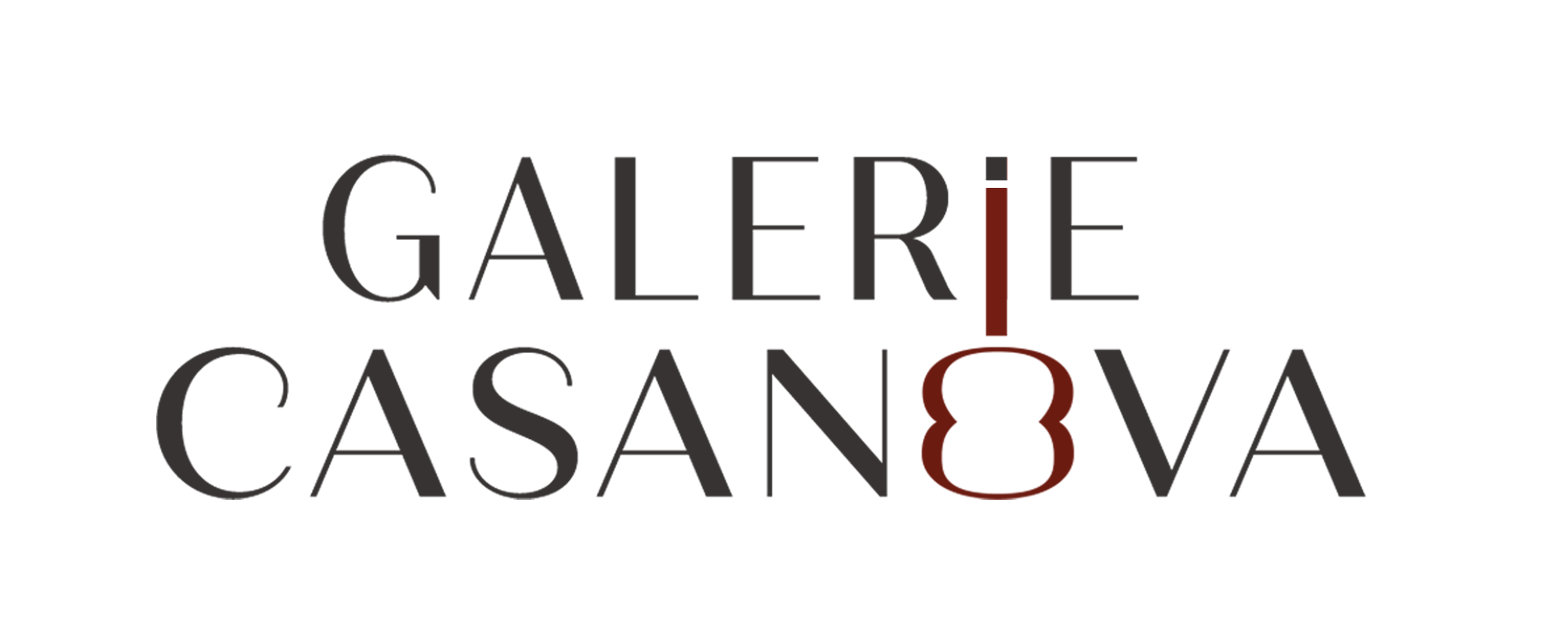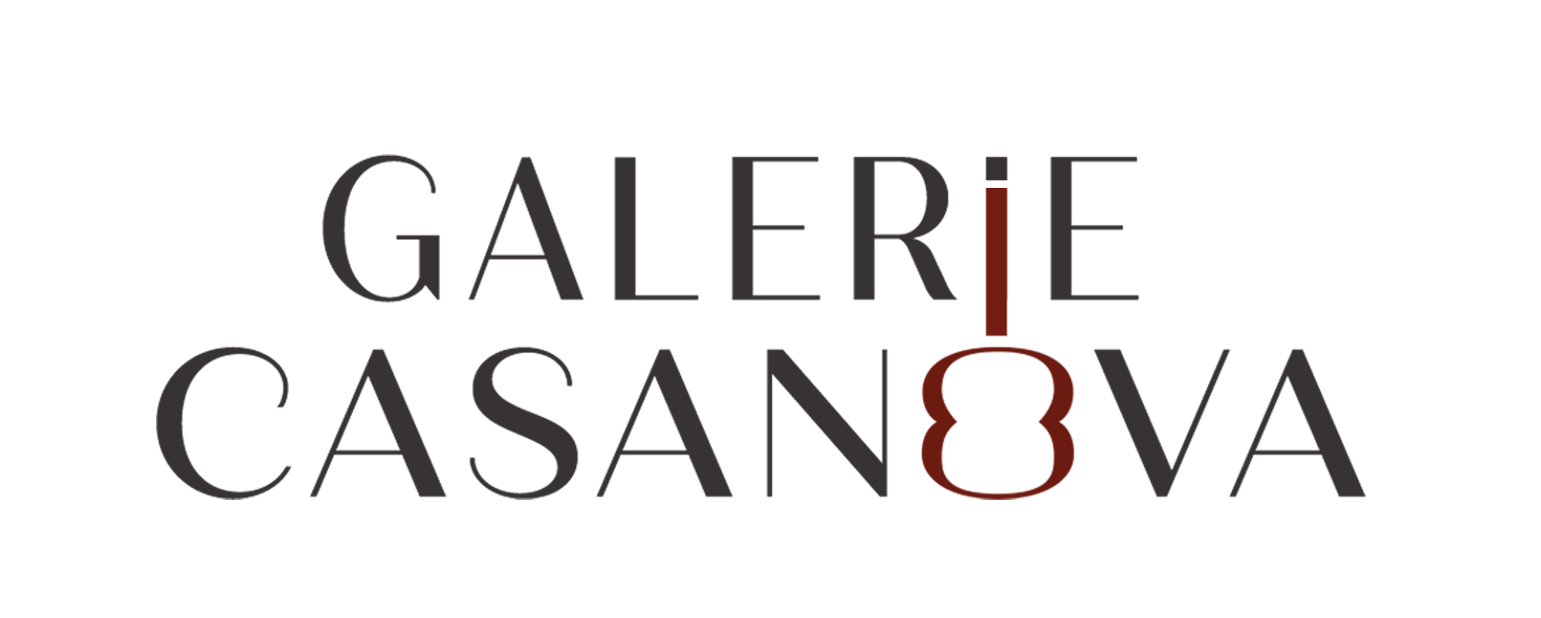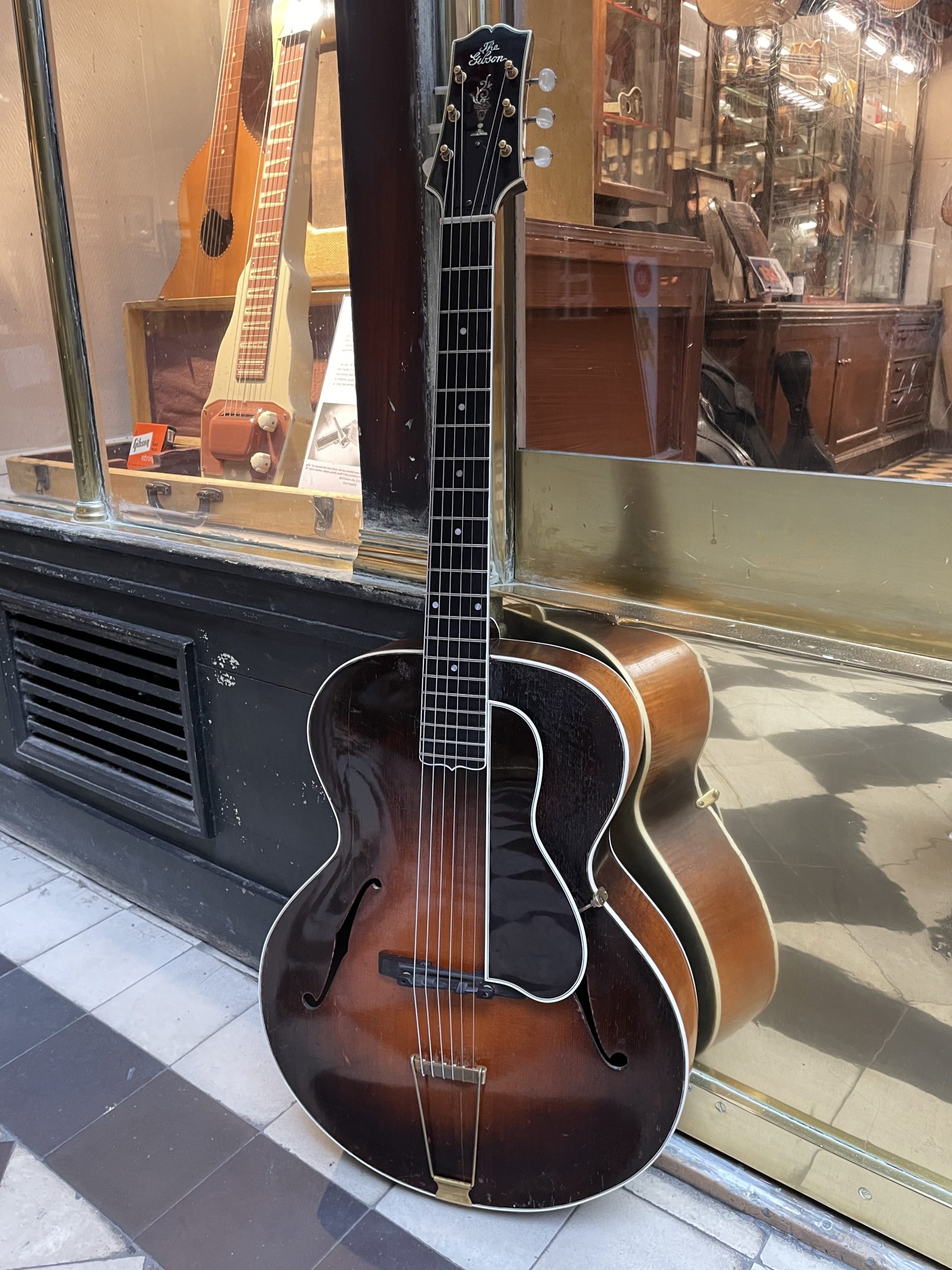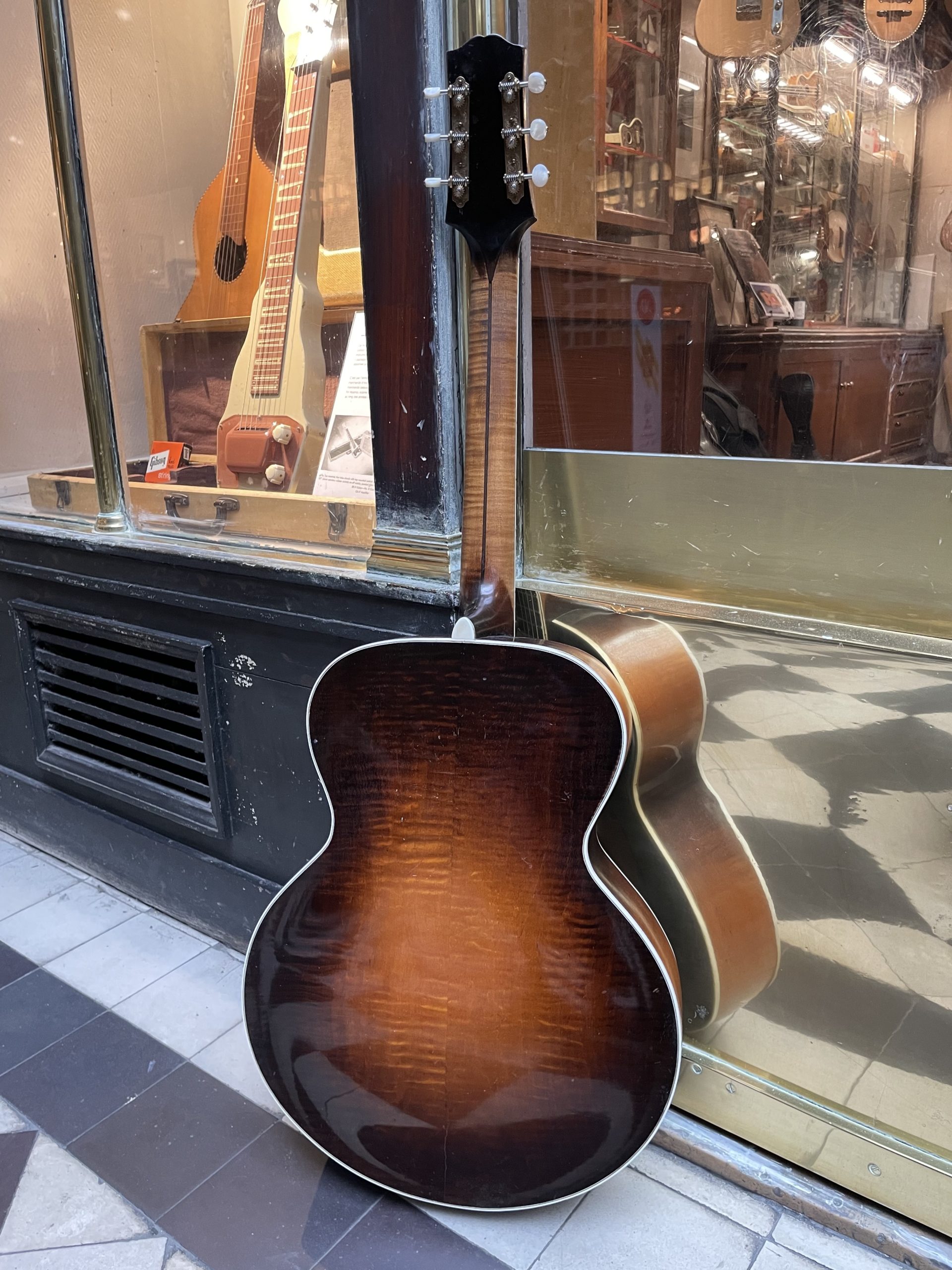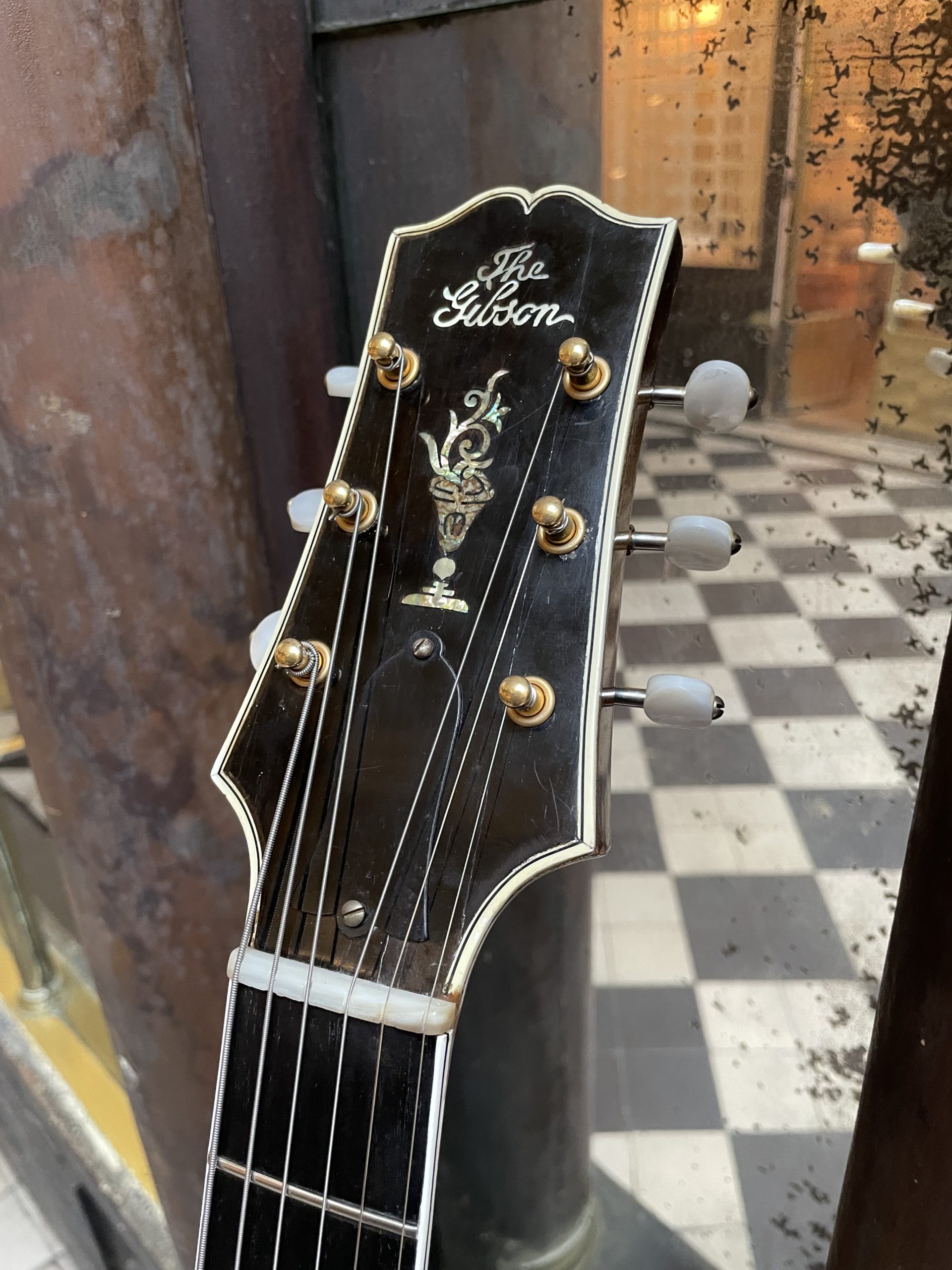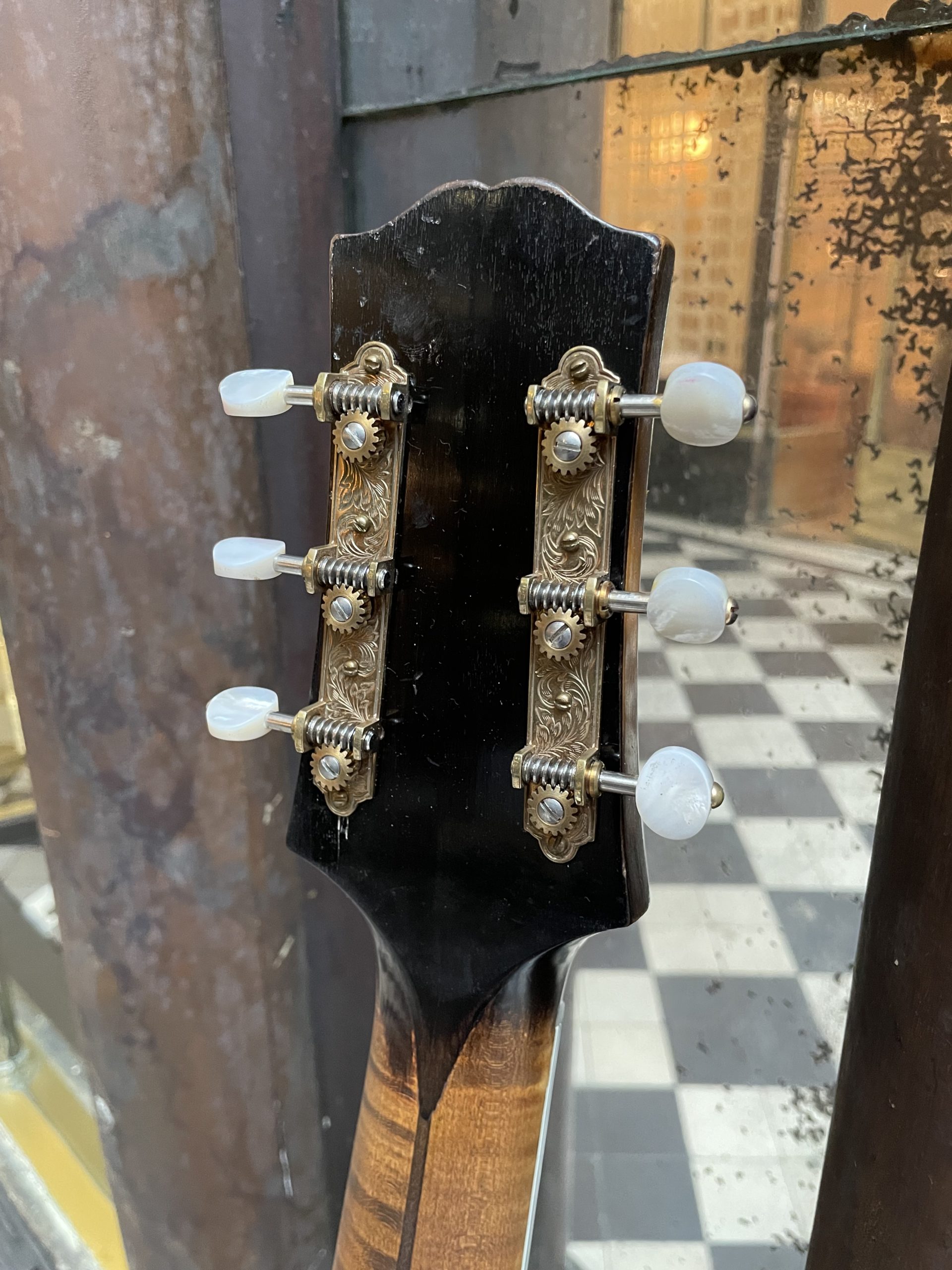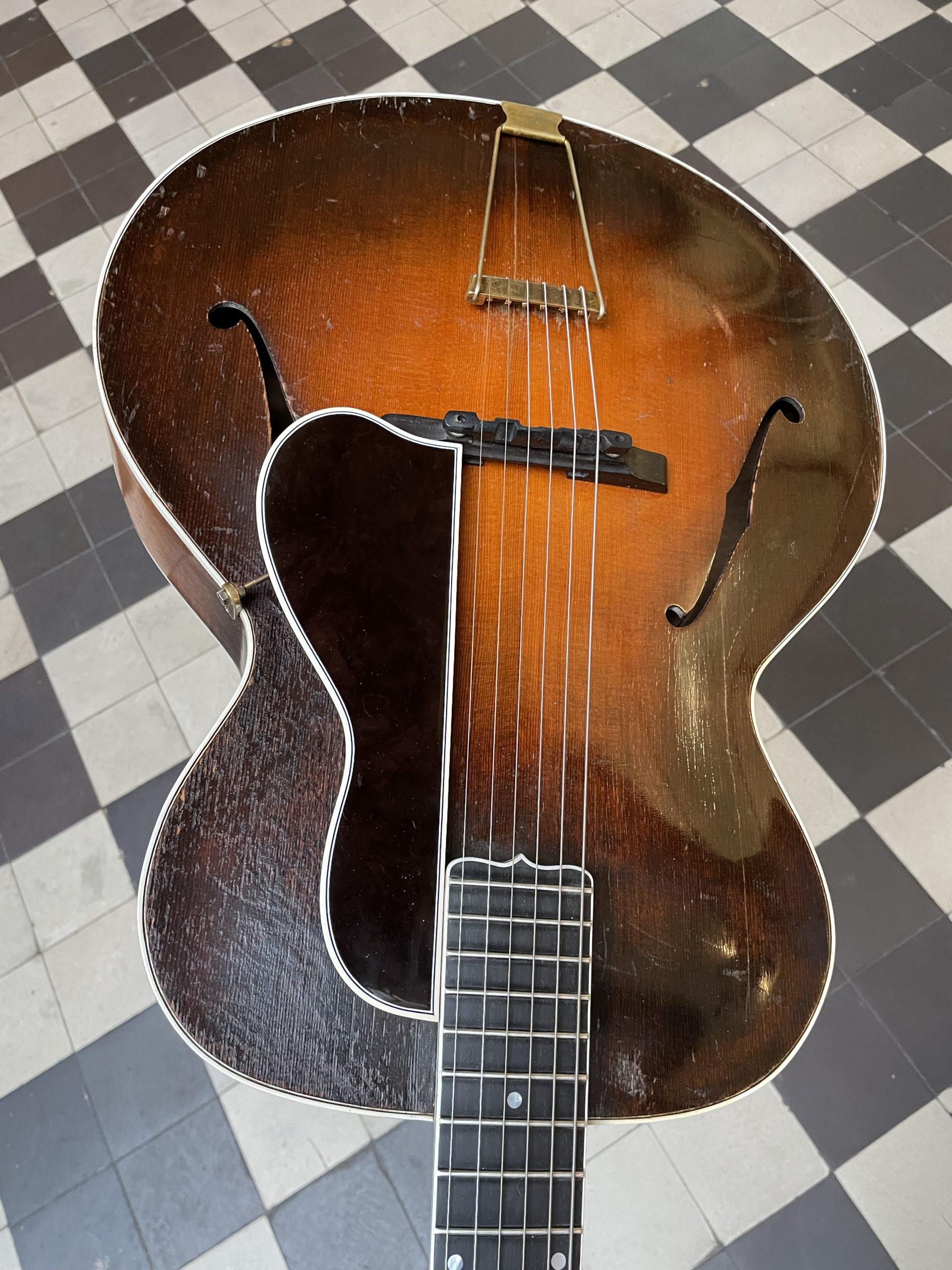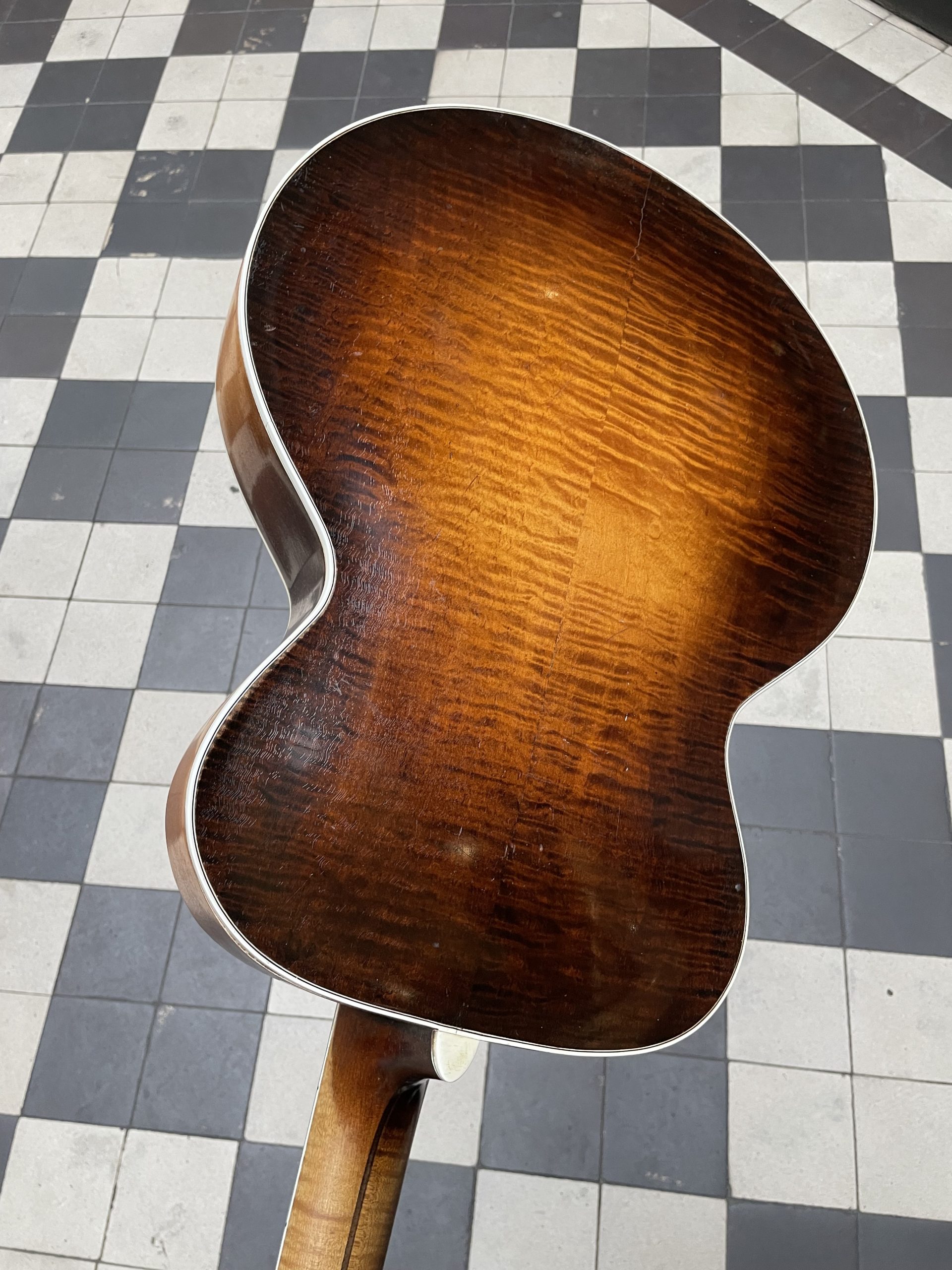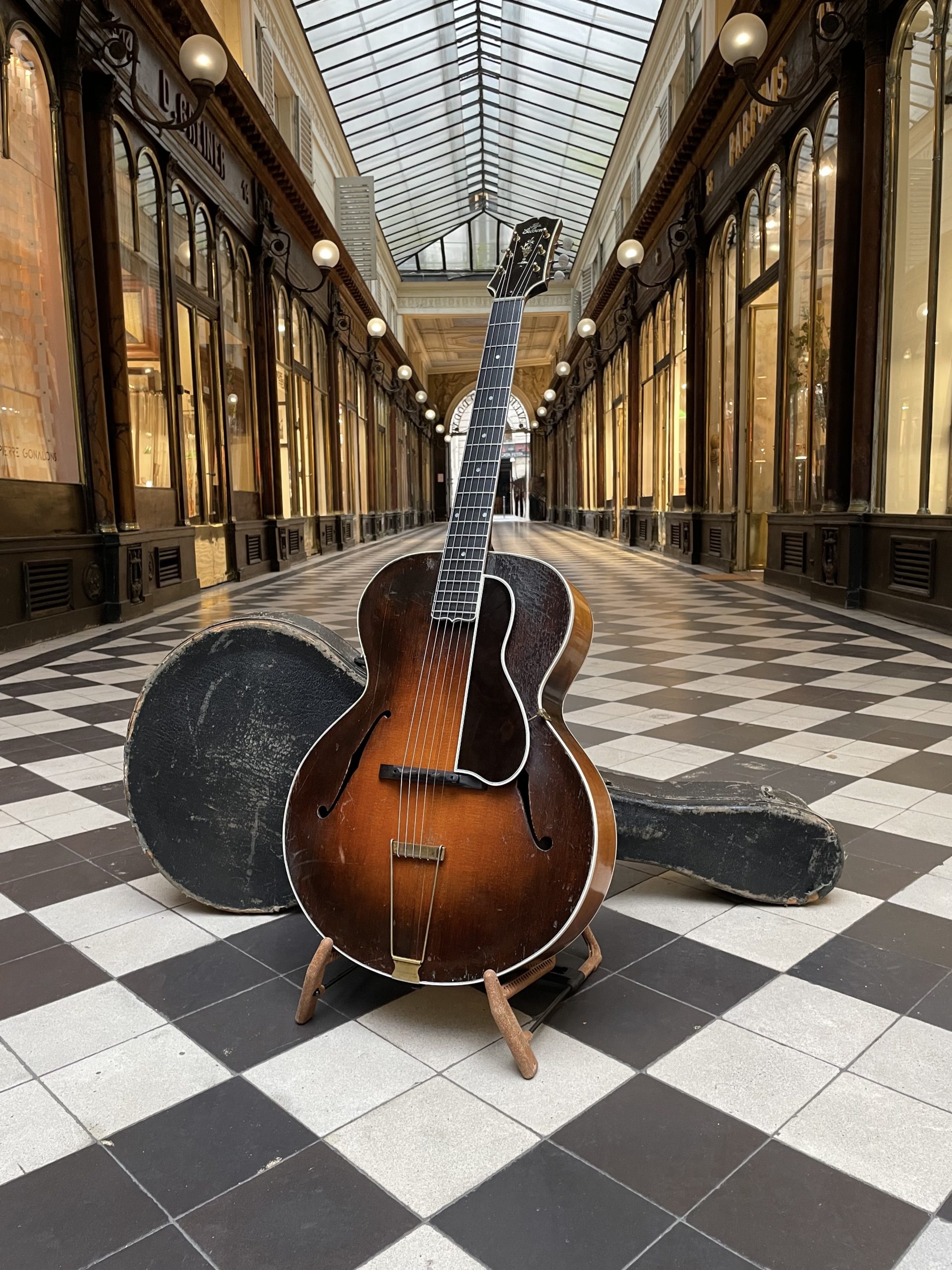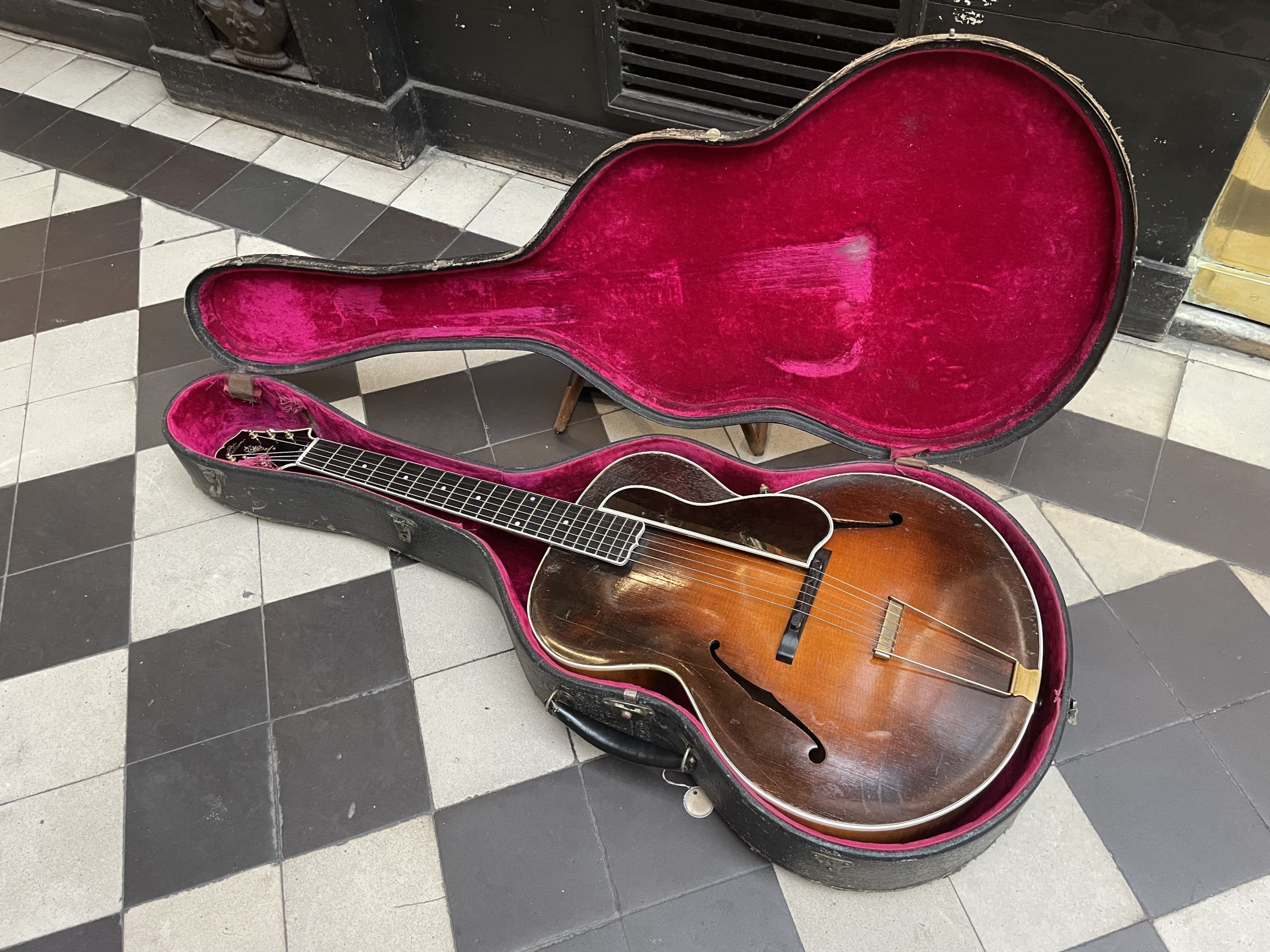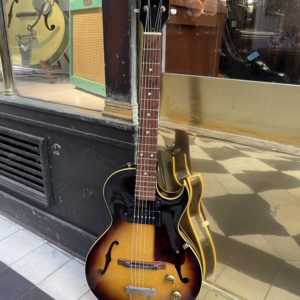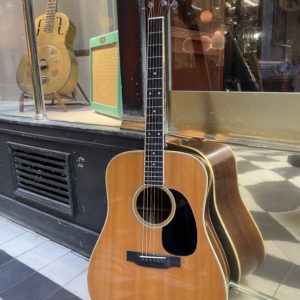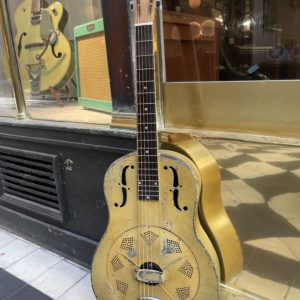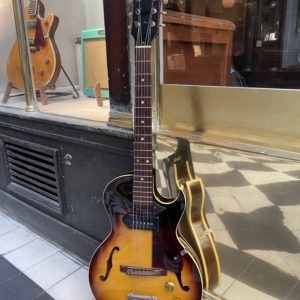1930 GIBSON L-5 MASTER MODEL
The prices indicated correspond to the price in the case of payment in-store or by bank transfer. In the case of payment by credit card via the website, a processing fee of [3.25% + €0.25]* will be applied to the total amount of the basket, including delivery costs.
Gibson L-5 Master Model from 1930, in very good condition.
This magnificent and iconic model is of considerable historical importance: the first L-5s were originally designed to complement a mandolin orchestra, as envisioned by Orville Gibson in the early 20th century, before becoming with their many imitators the first “jazz” guitars and the real driving force of the rhythm sections in the big bands of the following decade. Debuting in 1923-24, the L-5 was the first modern archtop guitar combining violin-like f-holes, an 14-fret neck, and a raised fingerboard. By the time the present model was built in 1930, it was taking its place at the top of Gibson’s high end instruments and certainly had no serious competition. Other manufacturers would soon embark on this same path (including D’Angelico and Stromberg), but always based on the standard established by the original L-5.
That being said, the 1920s “Master Model” is a very rare guitar to come across today: first of all, its exorbitant price of $275.00 undoubtedly posed serious limits to its initial dispersion (in comparison, a Martin 000-45 made of exceptional exotic woods and richly inlayed with mother-of-pearl decoration cost $105.00 less at the same time). Moreover, there was virtually no market for such instruments: in 1927-28, at the height of the jazz era, the banjo was still the generally accepted instrument for the rhythmic role in orchestras, and there were also very few professional guitarists who could afford or even see the need for such an instrument, except for a Maybelle Carter, who was visionary both in her playing style and in her eccentric choice of a luxurious guitar. Ultimately, it was through the intervention of Eddie Lang, the most influential guitarist of the time, that the winds began to turn in favor of the L-5. At the beginning of the 1930s, his choice of this model opened the way for other popular musicians, including Nick Lucas and Roy Smeck, and finally gave Gibson domination over the archtop guitar market which they have never lost since.
This guitar bears its original “Master Model” label, a vestige of the days of Lloyd Loar who signed them by hand until 1924, and which continued appearing on high-end instruments after his departure from Gibson up until 1927-28; Style 5 instruments which bear such a label are therefore particularly revered nowadays. In addition, it presents all the typical characteristics of a “Master Model” L-5 from 1930, once again inherited from the Loar era: carved spruce top, back, sides and neck in flamed maple (the patterns of the maple on the back are particularly remarkable), superb Sunburst finish of great finesse, the “The Gibson” logo and the flowerpot motif inlaid in mother-of-pearl on the headstock, gold-plated engraved tuners with their mother-of-pearl buttons, the tailpiece also gold-plated, the adjustable ebony bridge with the patent number PAT’D JAN 18-21… Note, among the few stigmata from the past nine decades of this guitar, a new ebony fingerboard and pickguard were made in copy of the original, and we can note the remains of the installation of a piezoelectric cell, which has since been removed.
The guitar has been fully checked, set up and prepared by us, so that its warm tone and generous volume can now be enjoyed in complete comfort and perfectly in tune.
Sold in its original hardshell case.
SOLD
